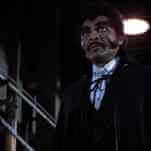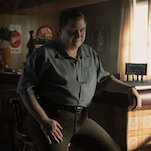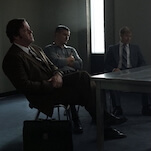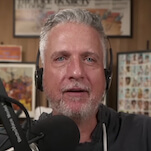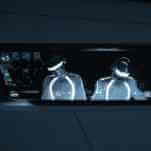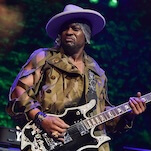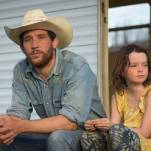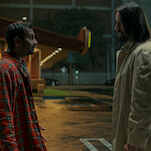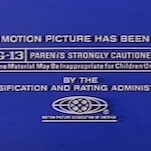In terms of the coping mechanisms a generation of Americans learned from PBS stars, three examples come to mind. There’s Big Bird mourning Mr. Hooper, Fred Rogers’ reminder to “Look for the helpers,” and LeVar Burton’s eternal message of healthy literary skepticism: “But you don’t have to take my word for it.” The power of these examples is in their universal applications—current events call for that Rogers quote to recirculate with alarming frequency—but these shows could get specific as well.
In 2001, Sesame Workshop produced a series of episodes in which a hurricane blows through Sesame Street, demolishing Big Bird’s nest in the process. The aim was to help young viewers make sense of frightening natural disaster footage shown elsewhere on their TV sets; to that end, the episodes reran in the days following Hurricanes Charley and Katrina. When Hurricane Sandy made landfall in Sesame Street’s neck of the woods in 2012, excerpts from the 2001 episodes were compiled to make up an additional installment for the show’s 43rd season. The episode was a public service, but one whose subject matter had just hit home for the show’s staff, stranding the original footage in a Queens storage facility while the editors who cut the special were marooned in New Jersey and injured on a city street.
In wrecking one of TV’s most iconic settings and stretching the hurricane story across a broadcast week, Sesame Street accurately mimicked the aftermath of a tropical storm. The wreckage isn’t swept away after the first hour, and even after the structures around Big Bird’s nest are restored to their prior state, there’s still the matter of building the actual nest. Like the show’s treatment of death and mortality, there are no euphemisms at play here, and the dialogue doesn’t talk down to its intended audience. The latter passages even find Big Bird and friends navigating the red tape of architectural planning and municipal inspections. For a story starring 6 feet of fowl, it’s a stunningly down-to-earth presentation.
Much of that has to do with Caroll Spinney’s performance as the show’s wide-eyed avatar of childhood emotion. Spinney’s experience with the character has given him an uncanny ability to emote through feathers and servos, something that becomes especially clear when all of the hurricane segments are compressed into a single hour. The post-Sandy special takes Big Bird on a wild ride of up-and-down feelings, and Spinney conveys all that anger, frustration, sadness, and joy honestly and identifiably. There’s a genuine understanding at play in the way the character repeats the refrain “My nest, my home” throughout the episode. A child that age would view their home as the things within its four walls, which makes the way Big Bird clings to his two most prized possessions—a hand-drawn portrait of Mr. Hooper, and his teddy bear, Radar—all the more gutting.
But the ultimate comfort of these segments is that they depict Sesame Street as more than the Hooper’s Store awning or the lamp post with its familiar yellow-and-green street sign—it’s also the people, animals, and monsters who live there. While the nest undergoes renovations, Big Bird hops between the apartments of his human neighbors; best friend Mr. Snuffleupagus arrives on the scene not long after the cleanup commences. Others are on hand to lend moral support and/or comic relief, like the “hurricane detection” exchanges between Gina and Telly, one of latter-day Sesame Street’s finest double acts. When he needs his friends the most, they’re there for him, and that’s an important lesson to impart. Watch for the helpers: They’re the people that you meet when you’re walking down the street. They’re the people that you meet each day.
Availability: The episode is streaming at the official Sesame Street website.








